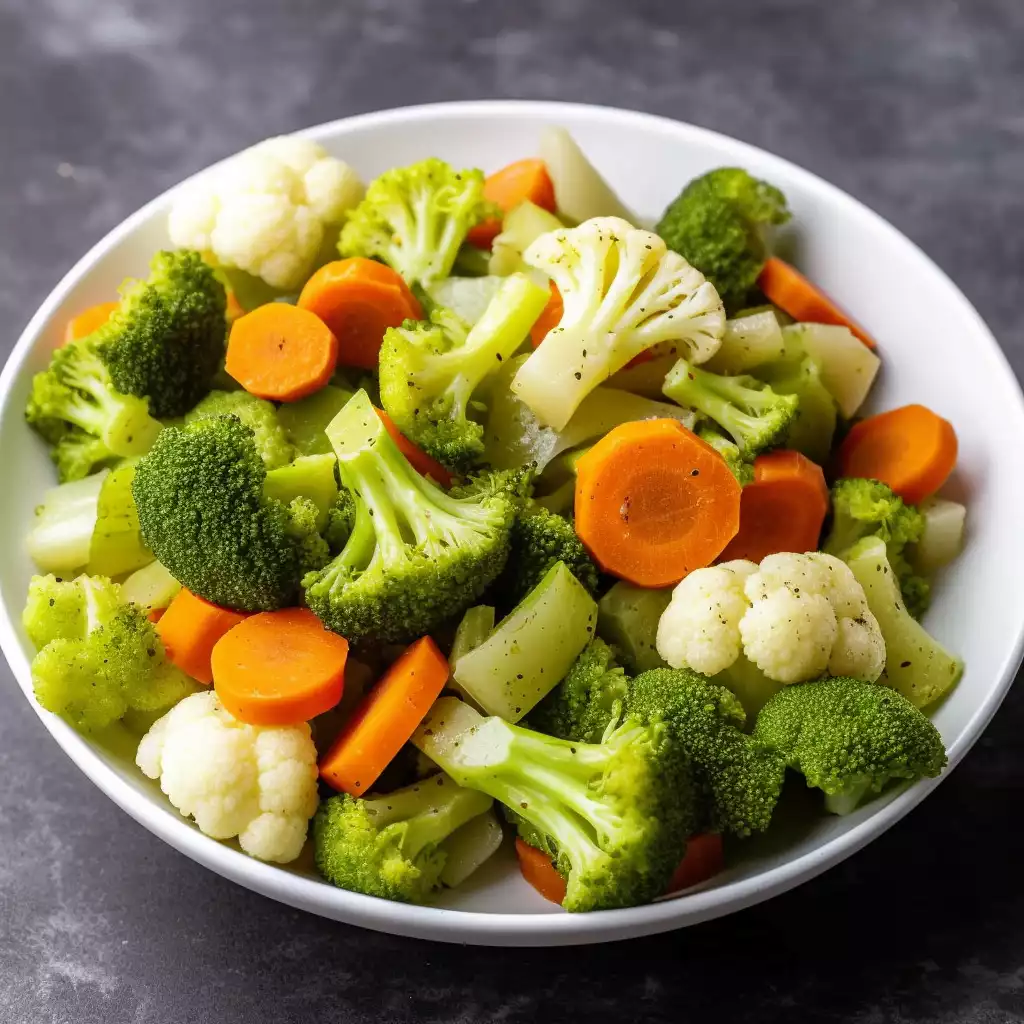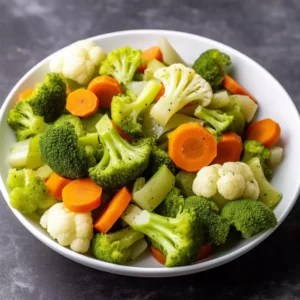
Steamed vegetables, a culinary marvel that transforms humble veggies into tender, vibrant delights, have been cherished across cultures for centuries.
Originating from ancient cooking techniques, steaming preserves the natural flavors and nutrients of vegetables, making it a go-to method for health-conscious cooks.
Whether as a standalone side dish or a complement to a hearty meal, steamed vegetables offer a delightful medley of colors, textures, and tastes.
In today’s bustling world, where time is of the essence, steamed vegetables emerge as a beacon of simplicity and nourishment. With just a handful of ingredients and minimal prep work, anyone can master this recipe, regardless of culinary expertise.
The beauty lies in its versatility; you can customize the vegetable mix to suit your preferences, whether it’s the earthy sweetness of carrots, the crispness of broccoli, or the delicate florets of cauliflower.
Embark on a culinary journey with me as we explore the art of steaming vegetables to perfection. From washing and chopping to seasoning and drizzling, each step is infused with care and flavor.
Join me in savoring the wholesome goodness of steamed vegetables, a timeless classic that never fails to delight the palate and nourish the soul.
Expert Tip: To save time on busy weeknights, you can prepare the vegetables in advance and store them in the refrigerator until ready to steam.
Mixed Vegetables (Carrots, Broccoli, Cauliflower): These colorful and nutritious vegetables form the heart of this recipe. Carrots add a hint of sweetness, broccoli contributes a refreshing crunch, and cauliflower offers a mild, creamy flavor. Together, they create a delightful medley of textures and tastes, making this dish both visually appealing and satisfying.
Salt: Salt enhances the natural flavors of the vegetables, bringing out their sweetness and adding depth to the dish.
Black Pepper: A touch of black pepper provides a subtle heat and earthiness, balancing the sweetness of the vegetables and adding a layer of complexity to the flavor profile.
Olive Oil: Drizzling olive oil over the steamed vegetables not only adds a luscious richness but also helps to lock in moisture and enhance the overall taste. Its fruity and slightly peppery notes complement the vegetables beautifully, elevating them from simple to sublime.
Expert Tip: For added flavor, you can sprinkle grated Parmesan cheese or toasted nuts over the steamed vegetables before serving.
Expert Tip: Don’t overcrowd the steamer basket or colander, as it can lead to uneven cooking. Spread the vegetables out in a single layer for optimal results.
Yes, you can use frozen vegetables if fresh ones are not available. Just make sure to thaw them before steaming, and adjust the steaming time accordingly.
Be careful not to overcook the vegetables. Steam them just until they are tender but still retain some crispness to prevent them from becoming mushy.
Absolutely! Feel free to experiment with different herbs and spices to customize the flavor according to your preferences. Some popular options include garlic powder, lemon zest, thyme, or paprika.
Leftover steamed vegetables can be stored in an airtight container in the refrigerator for up to 3-4 days. Reheat them gently in the microwave or on the stovetop before serving.
If you don’t have a steamer basket, you can use a metal colander or even a heatproof plate placed inside a pot with a lid. Just make sure there is enough space between the vegetables and the water to prevent them from getting soggy.
Here are some more recipes for you to enjoy! If you my recipes don’t forget to rate and leave a comment.
If you have any recipe suggestions, please do not hesitate to ask me. A great way to stay in contact with me is through Instagram, Facebook, Twitter and YouTube. Don’t forget to tag me @CookwithNabeela in your recipe photos!

Subscribe now to receive my latest recipes directly in your inbox. Stay up-to-date and never miss out!

I love to cook! I want to share with you my favourite, delicious family-friendly recipes. I want to inspire you to create fantastic food for your family every day.
Add your first comment to this post